Journal of Horticulture
Open Access
ISSN: 2376-0354
ISSN: 2376-0354
Research Article - (2023)Volume 10, Issue 3
Talinum triangulare, Amaranthus hybridus, Gnetum africanum, Pterocarpus mildbraedii and Telfairia occidentalis are underutilized Green Leafy Vegetables (GLVs). Storage and cooking losses undermine their nutritional and health benefits. T. triangulare has strong anti-oxidant properties; A. hybridus is good for managing blood pressure; T. occidentalis possess hypolipidaemic and anti-hyperglycaemic effects; G. africanum possess anti-inflammatory and anti-microbial properties; P. mildbraedii is an anti-microbial agent and is useful for the management of respiratory disorders. This review presents a comparative evaluation of the effects of moist heat treatment (boiling for 5 min at 98°C) and storage (at 29 ± 2°C), on the nutrients found in these vegetables which have health benefits for humans. Moist heat treatment reduces the vitamin content of the GLVs while the mineral content is more stable to cooking and storage conditions. Cooking reduces minerals in T. occidentalis (for zinc, iron, magnesium, and calcium) and iron for Cooking losses were high for niacin in P. mildbraedii; loss of riboflavin was highest in A. hybridus while the loss of vitamin C was highest in T. triangulare. Nutrient loses through other improved processing methods such as sautéing, microwave heating, freezing, irradiation should be established. Processing methods that will reduce the loss of water-soluble vitamins and iron should be investigated. Additional health benefits of each vegetable should be scientifically established.
Underutilized green leafy vegetables; Talinum triangulare; Amaranthus hybridus; Gnetum africanum; Pterocarpus mildbraedii; Telfairia occidentalis; Storage and cooking losses; Health benefits; Micronutrients
Over 7000 plant species are used for food worldwide and they play very important roles in nutrition, food security, income generation and food culture. Dark green leafy vegetables are considered an integral part of the underutilized food crops even though their intake will contribute significantly to sustainable food security [1-6]. Green leafy vegetables are valued for their vitamin, mineral and dietary fibre contents. They are generally low in calories, fat, proteins, and carbohydrates (although there are few exceptions). They are also rich in carotenoids (non-enzymic antioxidants) essential amino acids, and phenolic compounds. Gnetum africanum (Eru) is mainly collected from the wild [7] and could be propagated using the seeds [8,9]. The leaves are difficult to chew and slightly bitter [10]. It may be mixed with T. occidentalis and T. triangulare leaves to make delicious and health boosting soup in the Nigerian cuisine [11,12]. Pterocarpus mildbraedii leaves may be collected from the wild and are sometimes domesticated. Telfairia occidentalis is mainly cultivated. Talinum traingluare [13] and Amaranthus hybridus may be cultivated or found in the wild.
In addition to giving sensory appeal to foods, green leafy vegetables are “colours of good health” contributing micronutrients for metabolic reactions of the body and phytonutrients that possess additional heal benefits [14] yet many GLVs are underutilized [15-17]. This review presents scientifically validated research information on five underutilized GLVs and summarizes the effects of the most common processing and storage methods on their nutrient content as shown in Figure 1.
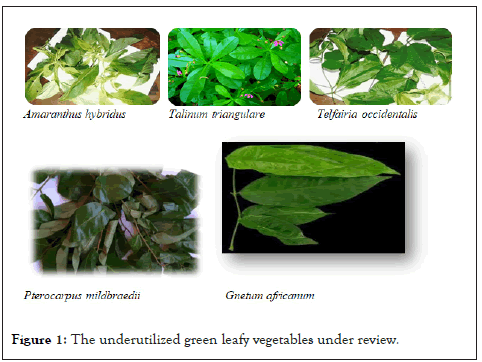
Figure 1:The underutilized green leafy vegetables under review.
Nutrients and health benefits of green leafy vegetables
Concise summary of the major nutrients and health benefits of Amaranthus hybridus, Talinum triangulare, Telfairia occidentalis, Gnetum africanum and Pterocarpus mildbraedii as shown in Table 1.
| Green Leafy Vegetable | Common names | Major components | Health benefits | References |
|---|---|---|---|---|
| Amaranthus hybridus Family: Amaranthaceae |
African Spinach, Amaranth; bushgreen | phytonutrients; soluble and insoluble dietary fibre; protein (12-17%); carotenoids, chlorophylls, anthocyanins, betalains, betacyanins, flavonoids, phenolic acids, proteins (rich in the essential amino acids methionine and lysine), and minerals | Good for managing weight and high blood pressure; strengthens the immune system; treats anaemia | [23,24] |
| Talinum triangulare Family: Portulaceae |
Water leaf; spinach | Rich in carotenoids (lutein and zeaxanthin); low in calories and high in fibre; | Boosts the immune cells of the eyes, macular degeneration of the eye and cataract; controls blood pressure; weight; cancer; cholesterol levels; diverticulosis, heart diseases, improves memory, perception, and cognitive abilities; sensitizes the neurons in the cerebrum; has anti-fungal; anti-bacterial; antioxidant and anti-inflammatory properties | [5,25,26] |
| Telfairia occidentalis Tribe: Jolifficeae; Subfamily: Curcubitae |
Possess antioxidant; anti-hyperglycaemic and hepato-protective properties; used to manage anaemia, diabetes, gastrointestinal disorders; sustain flow of breast milk during lactation; an antioxidant | [15, 27-29] | ||
| Gnetum africanum Family: Gnetaceae |
Eru/Okazi/Ukazi/Afang/Okok | Rich in protein (20.12%), fibre, iron, flavone-glycosides, and stilbenes, | Helps to keep the heart healthy, controls excess urination treats boils, wart and enlarged spleen; improves digestion. | [5,7,10,21] |
| Pterocarpus mildbraedii Family Papilionaceae |
White camp wood | Rich in ascorbic acid and carotenoids | Used in traditional folklore for the treatment of fever, headaches, convulsion, pains, and respiratory disorders and as an antimicrobial. | [3,30] |
Table 1: The major nutrients and health benefits five green leafy vegetables under review.
Amaranthus hybridus in a rich source of β-carotene, iron, calcium, vitamin C and folic acid [18]. Talinum triangulare is a rich source of Vitamin C, Vitamin E, Omega-3 fatty acids, calcium, magnesium, soluble fibres (pectin), potassium, β-carotene, proteins, and dietary fibre [19]. Telfairia occidentalis contains significant amounts of folic acid, calcium, zinc, potassium, cobalt, copper, iron, vitamins A, C, and K [13]. It also contains significant amounts of protein and fat [20]. Gnetum africanum is a good source of riboflavin, niacin, and tocopherol [21]. Pterocarpus mildbraedii is a good source of zinc, calcium, iron, potassium, vitamins A, B, and C [22]. Amaranthus hybridus helps reduce weight and ward off heart disease as it lowers blood cholesterol. Talinum triangulare aids digestion of food preventing gastrointestinal disorders. Telfairia occidentalis possess anti-diabetic activities, regulating the glucose level of diabetic patients due to the ethyl acetate content of the leaf. Gnetum africanum is a good source of protein that contains both essential and non-essential amino acids. It is used to treat enlarged spleen, control excess urination and constipation. Pterocarpus mildbraedii leaves possess antioxidant, antibacterial, antispasmodic, and diuretic properties.
The proximate composition of the underutilized green leafy vegetables as shown in Table 2. Values for Amaranthus hybridus (34.8%) and Telfairia occidentalis (35.4%) were for protein concentrates while values for Talinum triangulare, Gnetum africanum and Pterocarpus mildbraedii were for the whole leaves. Idris [31] had observed 24% protein in T.occidentalis leaves, while Akubugwo, et al. [18] obtained 17.92% protein for A. hybridus leaves. In terms of protein content, Talinum triangulare, Pterocarpus mildbraedii, and Telfairia occidentalis have the highest values. Efforts of researchers to investigate the protein concentrate have been documented. Total ash content of P. mildbraedii is quite high (20.63 %) and is indicative of high amounts of mineral elements.
| Proximate composition (g/100 g) Parameter | Amaranthus hybridus (Leaf protein concentrate) |
Telfairia occidentalis (Leaf protein concentrate) |
Talinum triangulare | Gnetum africanum | Pterocarpus mildbraedii |
|---|---|---|---|---|---|
| Moisture | 7.6 ± 0.6 | 6.6 ± 0.6 | 10.1 | 29.11 ± 0.57 | 13.3 ± 0.01 |
| Protein | 34.8 ± 1.1 | 35.4 ± 1.2 | 28.22 | 16.47 ± 0.02 | 26.5 ± 0.45 |
| Crude fat | 9.6 ± 0.02 | 10.7 ± 0.6 | 7.45 | 6.28 ± 0.03 | 8.66 ± 0.01 |
| Total ash | 17.2 ± 0.01 | 12.3 ± 0.01 | 26 | 8.25 ± 0.16 | 20.63 ± 0.03 |
| Crude fibre | 1.7 ± 0.15 | 1.6 ± 0.08 | 11.45 | 28.05 ± 0.81 | 12.33 ± 0.02 |
| Carbohydrate | 29.0 ± 0.4 | 33.4 ± 2.4 | 16.78 | 41.04 ± 0.56 | 18.61 ± 0.44 |
Table 2: Proximate composition of the underutilized green leafy vegetables [13,32,33].
The vitamin content of selected underutilized green leafy vegetables as shown in Table 3. Amaranthus hybridus contained significantly high amounts of ascorbic acid and vitamin K. Telfairia occidentalis was found to be rich in riboflavin, thiamine, and niacin.
| Vitamin | Amaranthus hybridus | Telfairia occidentalis | Talinum triangulare | Gnetum africanum | Pterocarpus mildbraedii |
|---|---|---|---|---|---|
| Ascorbic acid (mg) | 154.30 ± 0.14 | 10.33% | 48.95 ± 0.30 | 50.87 | 20.06 ± 0.01 |
| Riboflavin (mg) | 1.84 ± 0.02 | 13.25% | 0.17 ± 0.01 | 4.24 | 0.46 ± 0.01 |
| Thiamin(mg) | 0.14 ± 0.01 | 9.78% | 0.03 ± 0.00 | 2.75 | 0.25 ± 0.01 |
| Niacin (mg) | 3.69 ± 0.01 | 3.46% | 0.45 ± 0.02 | 1.54 | 1.55 ± 0.01 |
| Vitamin K (µg) | 122.21 | 1.46% | - | - | 18.71 ± 0.01 |
Table 3: Selected vitamins of underutilized green leafy vegetables (content per 100g edible portion (fresh weight basis)) [5,6,34,35].
The mineral content of the five underutilized green leafy vegetables under study as shown in Table 4. P. mildbraedii is a very rich source of potassium, calcium, magnesium, sodium and iron (a reflection of its high total ash content). Composition also depends on variety and environmental factors [34,36].
| Mineral element | Amaranthus hybridus | Telfairia occidentalis | Talinum triangulare | Gnetum africanum | Pterocarpus mildbraedii |
|---|---|---|---|---|---|
| Na | 32.3 | 31.2 | 3.72 | 0.16 ± 0.0 | 603.00 ± 3.01 |
| K | 11.6 | 20.4 | 2.60 | 1.90 ± 0.05 | 1048.55 ± 4.17 |
| Mg | 11.6 | 14.3 | 2.24 | 0.28 ± 0.03 | 778.00 ± 2.21 |
| Ca | 50.2 | 51.3 | 0.83 | 0.88 ± 0.05 | 1283.00 ± 5.15 |
| P | - | - | 0.90 | 0.18 ± 0.00 | 1002.10 ± 3.34 |
| Zn | 7.5 | 11.6 | 0.08 | - | 25.10 ± 1.02 |
| Fe | 10.4 | 6.4 | 0.40 | 0.59 ± 0.004 | 146.45 ± 2.22 |
| Cu | - | - | 0.02 | - | 9.55 ± 1.76 |
| Mn | 0.08 | 0.1 | 0.01 | - | 4.00 ± 0.12 |
Table 4: Mineral composition of the underutilized green leafy vegetables (mg/100 g) (mg/kg) [5,6,31,32,35].
The essential amino acid composition of the underutilized green leafy vegetables in comparison with FAO (Food and Agriculture Organization) standards as shown in Table 5. Lysine contents of all the underutilized GLVs were lower than the FAO standard values. Phenylalanine and arginine contents of all the GLVs were higher than the FAO standard vales. A. hybridus had higher amounts of histidine, and leucine than the FAO standard. The leucine content of P. mildbraedii isoleucine and threonine contents of G. africanum and valine content of T. triangulare was higher than the FAO standard values. T. triangulare had higher amounts of valine than the FAO standard value while G. africanum had higher amounts of threonine than the FAO standard. A. hybridus had the highest essential amino acid composition while T. occidentalis had the least when compared with the FAO standard. Amaranthus hybridus, Talinum triangulare, Gnetum africanum and Pterocarpus mildbraedii are good sources of essential amino acids.
| Essential amino acids composition (mg/g) | Amaranthus hybridus [33] | Telfairia occidentalis [33] | Talinum triangulare [44] |
Gnetum africanum [10] |
Pterocarpus mildbraedii [45] |
FAO standard, 2013 |
|---|---|---|---|---|---|---|
| Lys | 39.2 | 26.5 | 16.56 | 40.07 ± 3.94 | 32.40 | 57 |
| His | 33.2 | 11.2 | 12.56 | 16.33 ± 0.24 | 19.20 | 20 |
| Arg | 59.5 | 58.3 | 37.25 | 25.86 ± 1.76 | 42.20 | 24 |
| Thr | 27.6 | 17.2 | 25.62 | 55.61 ± 0.06 | 28.00 | 31 |
| Val | 39.0 | 24.8 | 88.75 | 32.78 ± 3.21 | 42.20 | 43 |
| Met | 34.1 | 10.0 | 13.75 | 2.4 | 8.30 | |
| Ile | 47.1 | 22.1 | 34.43 | 42.50 ± 4.06 | 35.50 | 32 |
| Leu | 75.4 | 53.9 | 5.6.37 | 45.71 ± 3.15 | 81.00 | 66 |
| Phe | 38.4 | 32.2 | 38.81 | 28.84 ± 3.52 | 40.30 | 27.92 ± 4.01 |
Table 5: Essential amino acid composition of underutilized green leafy vegetables.
Cooking losses for vitamins and minerals in Green Leafy Vegetables (GLVs)
The vitamin losses for the five green leafy vegetables during domestic processing cooked for 5min in boiling water (1:5 ratio: vegetable: water) as shown in Figure 2a.
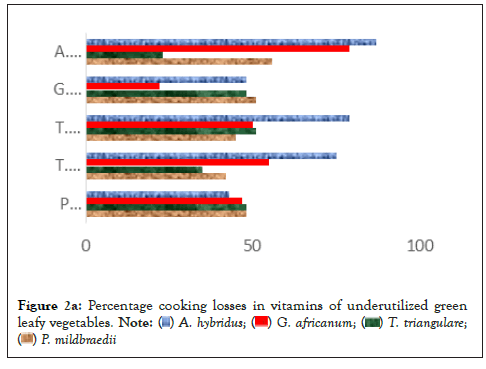
Figure 2a: Percentage cooking losses in vitamins of underutilized green
leafy vegetables. Note: ( ) A. hybridus; (
) A. hybridus; ( ) G. africanum; (
) G. africanum; ( ) T. triangulare;
(
) T. triangulare;
( ) P. mildbraedii.
) P. mildbraedii.
The cooking losses for vitamins in the five GLVs. For niacin (Vitamin B3) the cooking loss was highest for P. mildbraedii and lowest for A. hybridus. Thiamin loss was remarkably high for G. africanum and relatively low for A. hybridus. The cooking loss was highest for vitamin B2 in A. hybridus and lowest for G. africanum and P. mildbraedii. Loss of vitamin C was highest in Talinum triangulare and lowest in A. hybridus. Boiling in water may result to up to 100% loss of vitamin C [35] in some vegetables.
The cooking loss for minerals cooked for 5 min in boiling water (1:5 ratio: vegetable: water) in the five GLVs as shown in Figure 2b. Loss of zinc during cooking was highest for T. occidentalis and lowest for A. hybridus, T. triangulare and G. africanum. Loss of iron was highest for T. occidentalis and T. triangulare and lowest for G. africanum and A. hybridus. The cooking loss for magnesium was highest for T. occidentalis and lowest for P. mildbraedii. Loss of calcium was highest for T. occidentalis and lowest for P. mildbraedii. The loss of potassium was highest for T. occidentalis and lowest for G. africanum. Both boiling and microwave cooking have been observed to cause drastic micronutrient losses in green leafy vegetables [37].
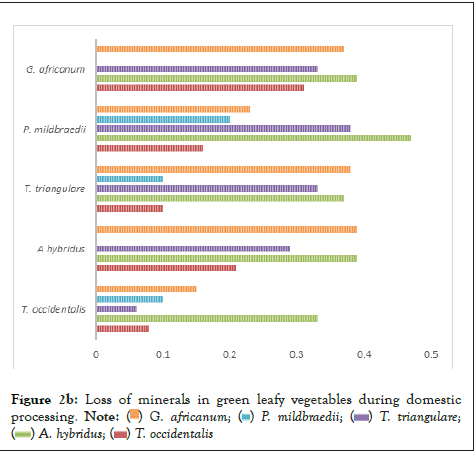
Figure 2b: Loss of minerals in green leafy vegetables during domestic
processing. Note: ( ) G. africanum; (
) G. africanum; ( ) P. mildbraedii; (
) P. mildbraedii; ( ) T. triangulare;
(
) T. triangulare;
( ) A. hybridus; (
) A. hybridus; ( ) T. occidentalis.
) T. occidentalis.
Storage losses for vitamins and minerals in green leafy vegetables
The storage loss of vitamins in the GLVs (wrapped in paper and stored in the dark for 5 days at room temperature (28 ± 2°C) as shown in Figure 2c. The loss of vitamin K during storage was highest for G. africanum and lowest for P. mildbraedii. The loss of niacin (vitamin B3) was highest G. africanum and lowest in T. traingulare. The loss of thiamine (vitamin B1) was highest in G. africanum and lowest in T. occidentalis. Storage loss of riboflavin (vitamin B2) was most marked in T. triangulare and least in T. occidentalis and A. hybridus. Loss of vitamin C during storage was highest in P. mildbraedii and lowest in A. hybridus.
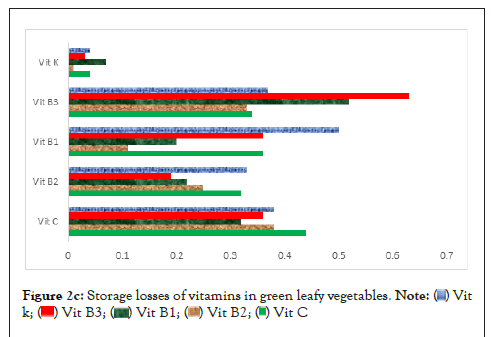
Figure 2c: Storage losses of vitamins in green leafy vegetables. Note: ( ) Vit
k; (
) Vit
k; ( ) Vit B3; (
) Vit B3; ( ) Vit B1; (
) Vit B1; ( ) Vit B2; (
) Vit B2; ( ) Vit C
) Vit C
The mineral loses during the storage of the green leafy vegetables. The loss of minerals in the GLVs due to storage (wrapped in a newspaper and stored in the dark for 5 days at room temperature (28 ± 2°C) as shown in Figure 2d. Loss of zinc during storage was highest for G. africanum and A. hybridus and was lowest in T. triangulare. Loss of iron during storage was highest for P. mildbraedii and T. occidentalis. There was no loss of iron in A. hybridus because of storage and loss of iron in T. triangulare was relatively low. There was no loss of magnesium in P. mildbraedii and A. hybridus because of storage. Loss of magnesium in G. africanum was relatively low. Loss of calcium was highest in T. occidentalis and lowest in T. triangulare. Loss of potassium was highest in P. mildbraedii, T. triangulare and T. occidentalis but lowest in G. africanum.
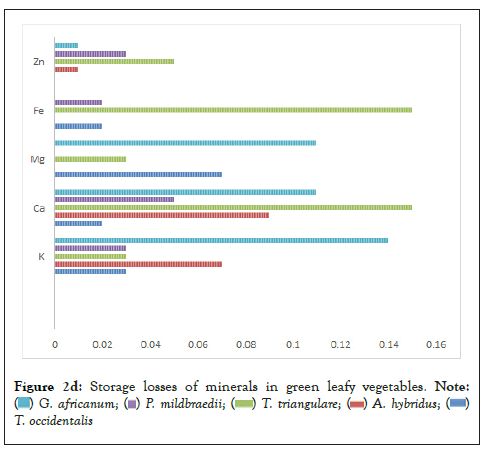
Figure 2d: Storage losses of minerals in green leafy vegetables. Note:
(  ) G. africanum; (
) G. africanum; ( ) P. mildbraedii; (
) P. mildbraedii; ( ) T. triangulare; (
) T. triangulare; ( ) A. hybridus; (
) A. hybridus; ( ) T. occidentalis.
) T. occidentalis.
The total carotene contents of the green leafy vegetables. Except for Amaranthus hybridus (where the raw leaves contained more carotene than the stored leaf), cooking and storage led to an increase in the carotene content of vegetables as shown in Figure 3. The increase due to cooking was higher than the increase due to storage. In addition to vision, vitamin A is involved in normal growth and development, immunity, maintenance of the epithelial cells and reproduction. Vitamin A deficiency is a public health problem in some developing countries where available fruits and vegetables can effectively be used to meet the vitamin A needs. Carotenoids are effective for the management of obesity and diabetes [38]. Carotenoids are accessory pigments to chlorophyll and are antioxidants [1].
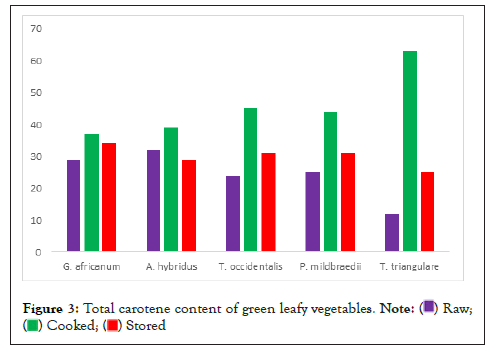
Figure 3: Total carotene content of green leafy vegetables. Note: ( ) Raw;
(
) Raw;
( ) Cooked; (
) Cooked; ( ) Stored.
) Stored.
The American dietary guidelines recommend five servings of vegetables per day for an intake of 2000 calories [39-42] one of which should be green leafy vegetables diversified for optimal nutritional benefits [43].
The major nutrients from five underutilized green leafy vegetables are reported; nutrient losses during moist heat treatment and storage were compared and the best sources of nutrients identified. Gnetum africanum, Telfairia occidentalis and Amaranthus hybridus are protein rich nutritious leafy vegetables. Amaranthus hybridus, Pterocarpus mildbraedii and Telfairia occidentalis contain relatively high amounts of vitamins and minerals and are blood and immune system boosters. Mineral elements in Amaranthus hybridus are retained well comparatively during storage. Storage by wrapping the green leafy vegetables in paper and storing in the dark at 30 ± 2°C minimizes the loss of nutrients (especially the mineral elements). Short term storage does not result in the loss of Fe and magnesium in A. hybridus.
Philippa C Ojimelukwe: Writing-original draft and the final paper; data curation. Felix N Okpalanma: Literature search and initial collation.
This research received no specific grant from any funding agency in the public, commercial, or not-for-profit sectors.
The Authors declare that there is no conflict of interest.
[Crossref]
[Crossref][Google Scholar] [PubMed]
Citation: Ojimelukwe PC, Okpalanma F (2023) Comparative Evaluation of Domestic Processing and Storage Losses of Micronutrients and the Health Benefits of Five Underutilized Green Leafy Vegetables (Glvs). J Hortic. 10:330.
Received: 19-Jun-2023, Manuscript No. HORTICULTURE-23-25210; Editor assigned: 22-Jun-2023, Pre QC No. HORTICULTURE-23-25210 (PQ); Reviewed: 07-Jul-2023, QC No. HORTICULTURE-23-25210; Revised: 14-Jul-2023, Manuscript No. HORTICULTURE-23-25210 (R); Published: 21-Jul-2023 , DOI: 10.35248/2376-354.23.10.330
Copyright: © 2023 Ojimelukwe PC, et al. This is an open-access article distributed under the terms of the Creative Commons Attribution License, which permits unrestricted use, distribution, and reproduction in any medium, provided the original author and source are credited.